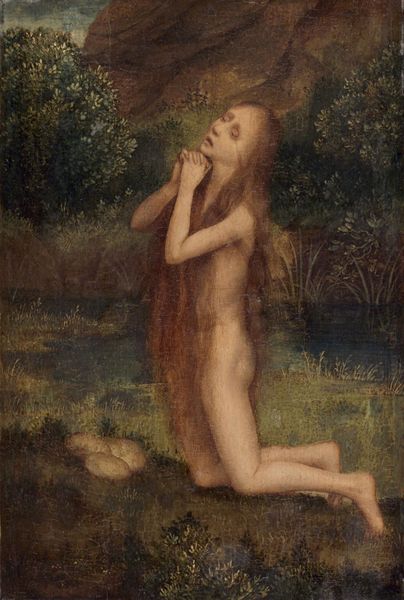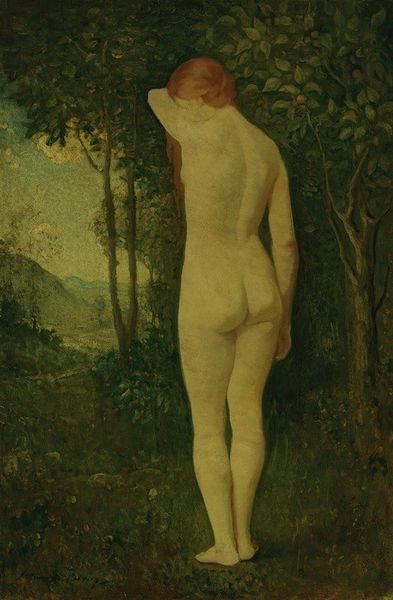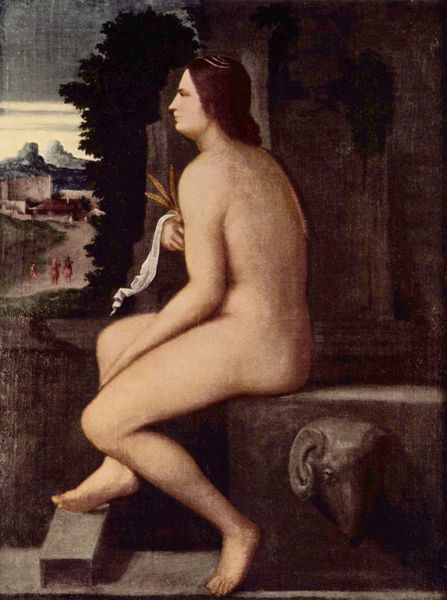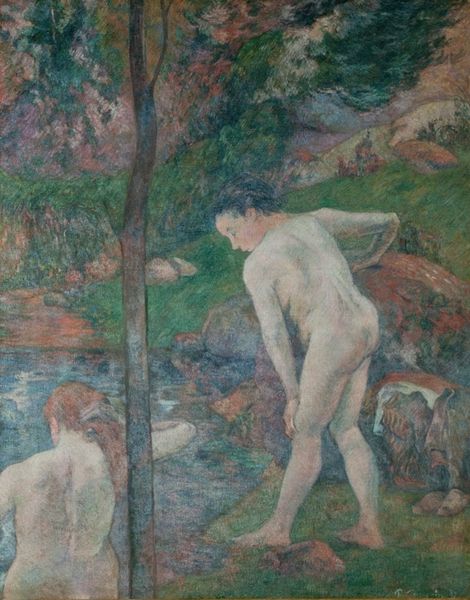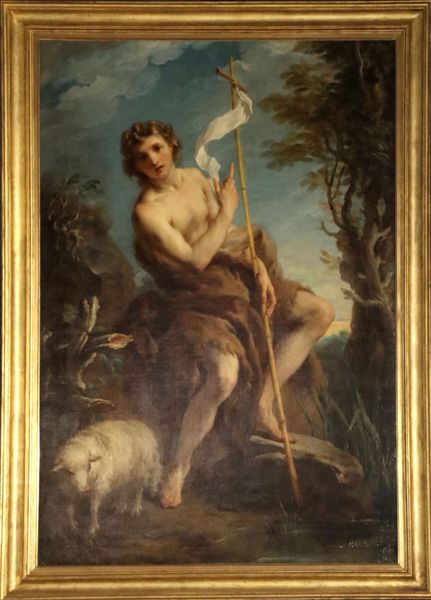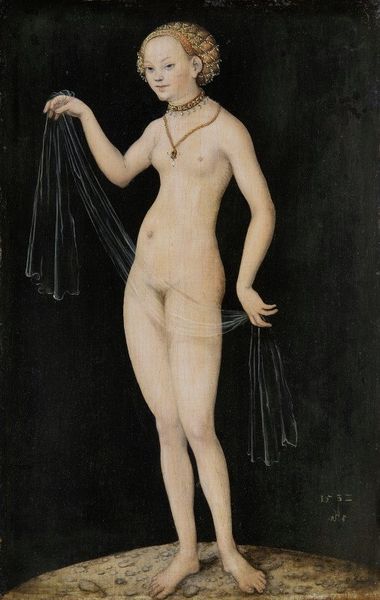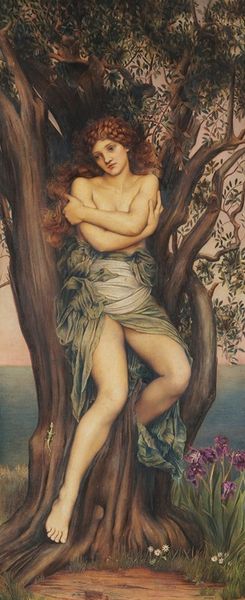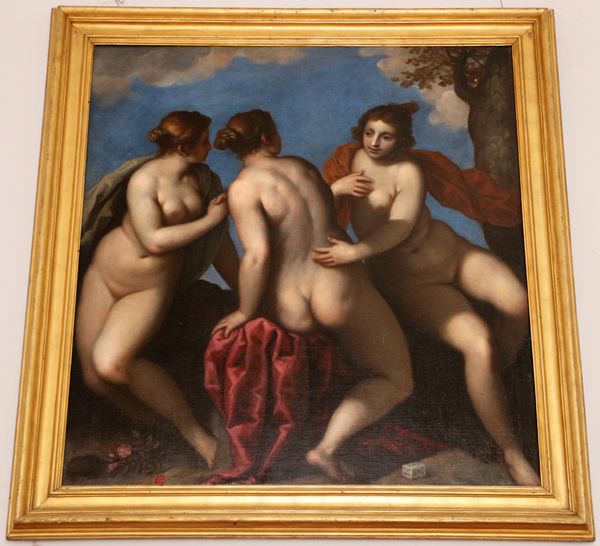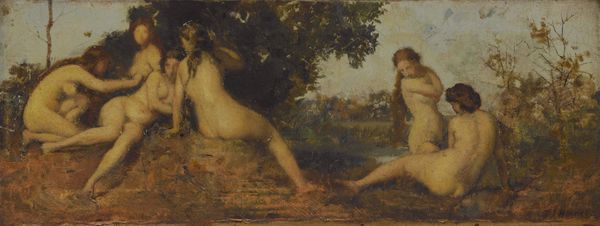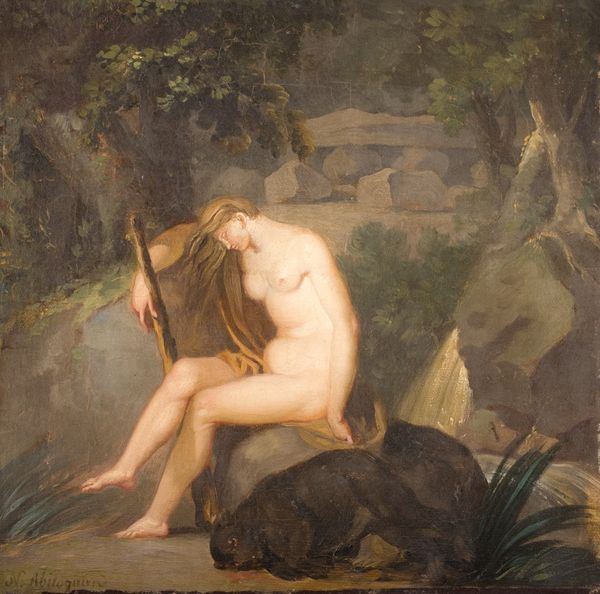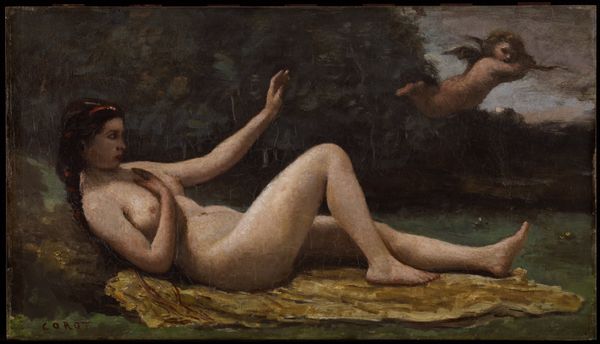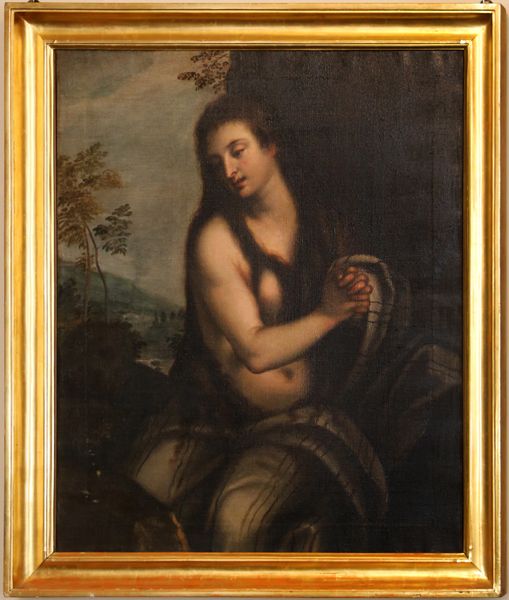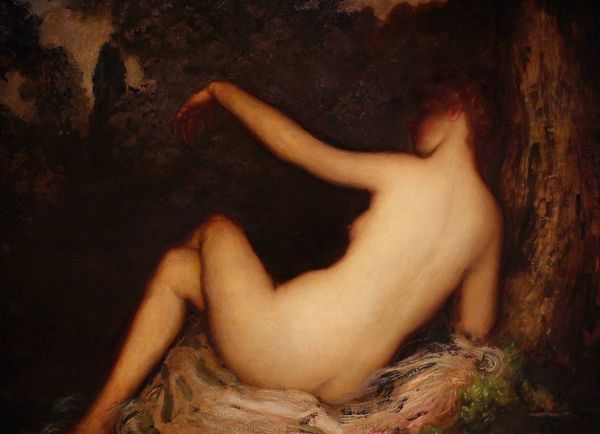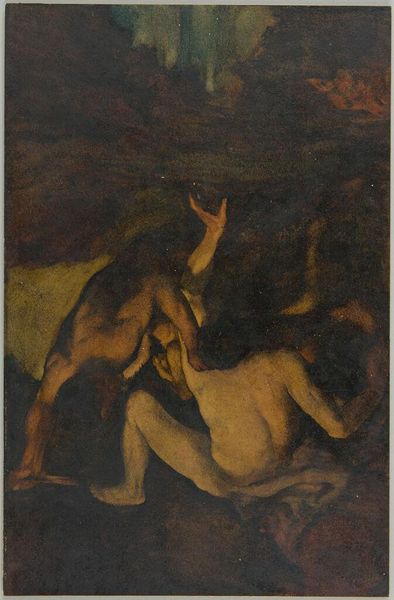
painting, oil-paint
#
portrait
#
painting
#
oil-paint
#
figuration
#
oil painting
#
history-painting
#
italian-renaissance
#
nude
#
portrait art
Copyright: Public domain
Editor: This is Quentin Matsys's "Mary Magdalene," an oil painting from around 1515. The figure's elongated form and the cascade of her hair create a really striking vertical emphasis. What stands out to you about this work? Curator: I am immediately drawn to the calculated deployment of color and line. Notice the delicate modelling of the figure; the subtle gradations in tone that define her form. How do you perceive the interplay between light and shadow across the painting's surface? Editor: The light seems focused on her, highlighting her skin against the darker background, really drawing attention to the figure. Is that deliberate, do you think? Curator: Precisely. And observe the formal contrast between the textures - the smoothness of her skin versus the impasto-like rendering of the foliage, each element contributes to the painting's overall structural dynamic, and invites our prolonged gaze. Is the composition asymmetrical or not? Editor: I think so, the rock behind her and the drapery on the right seem to balance out the more open space on the left. Curator: Indeed, and does that serve the thematic elements present in the composition? The subject gazes to our left while the rocky structure guides us in. The artist employs what we can call counter positioning that activates our visual comprehension. The structure and arrangement provide us clues to what the work is “saying”. Editor: So it’s less about what the figure represents, and more about how the elements in the painting work together to create meaning. That's fascinating; I hadn't considered it that way before. Curator: Correct. When one truly understands the construction one can get close to the creator and engage in artistic consilience.
Comments
No comments
Be the first to comment and join the conversation on the ultimate creative platform.
